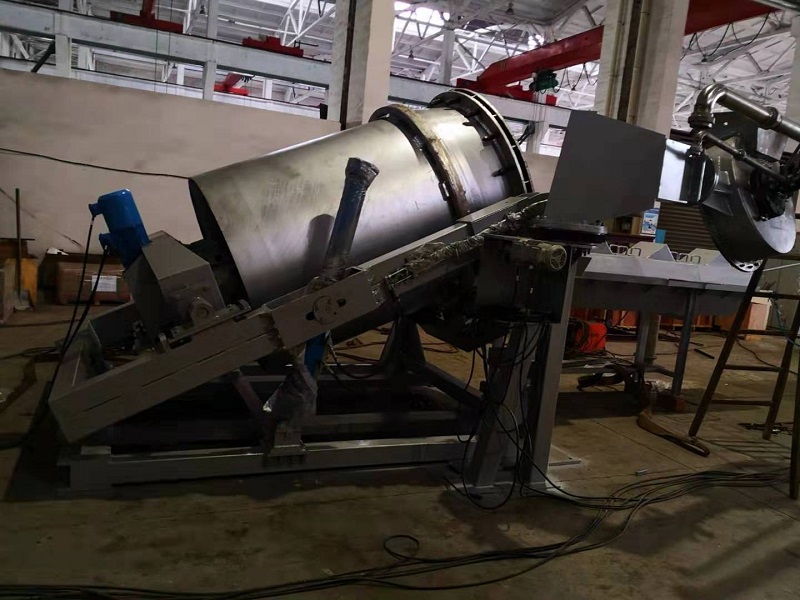In the world of metal processing and recycling, the question of how to efficiently and safely melt lead is of paramount importance. With applications ranging from batteries to radiation shielding, the demand for recycled lead continues to grow. To meet this demand, the industry has turned to advanced melting technologies, among which the Lead Tilting Rotary Furnace stands out for its efficiency and environmental friendliness.

The Lead Tilting Rotary Furnace (LRF) is an advanced smelting system designed to process a wide range of lead-containing materials. This includes lead-acid battery scrap, lead dross, and various types of lead oxides. The furnace is engineered to optimize heat efficiency, reduce fuel consumption, and minimize the release of harmful emissions.
Unlike traditional fixed-axis furnaces, the LRF features a rotating design that allows for a continuous agitation of the contents. This rotation ensures uniform heat distribution and prevents the formation of 'hot spots,' which can lead to suboptimal melting and potential waste of resources. The tilting mechanism, a defining characteristic of the furnace, enables operators to precisely control the pouring of molten lead and slag, further enhancing the efficiency of the process.
The LRF's design is particularly beneficial when dealing with lower-grade scraps that may contain impurities. The furnace's high processing temperatures, combined with the rotating action, allow for a more complete separation of lead from other non-metallic substances, resulting in a higher purity of the final product. This is crucial for industries that require high-quality lead for their products.
Safety is another significant advantage of the LRF. The furnace is equipped with advanced pollution control systems that capture and treat toxic fumes and particulates before they can be released into the environment. This not only protects the health of the workers operating the furnace but also minimizes the impact on the surrounding ecosystem.
The introduction of LRF technology has been a game-changer for lead recycling facilities. A recent case study from a leading metal processing plant demonstrated a 25% increase in production capacity after switching to a Lead Tilting Rotary Furnace. The plant also reported a 40% reduction in fuel consumption and a significant decrease in emissions, showcasing the furnace's contribution to both economic and environmental sustainability.
Experts in the field are optimistic about the future of LRF technology. The global focus on circular economies and sustainable material processing has put a spotlight on the need for efficient recycling methods. The LRF's ability to handle a variety of lead-bearing materials with high efficiency makes it a strong candidate for widespread adoption.
As the industry continues to innovate, the development of even more advanced versions of the LRF is expected. These improvements may include better heat recovery systems, more sophisticated control software, and improved materials that can withstand the harsh conditions inside the furnace for longer periods, reducing maintenance downtime and costs.
In conclusion, when it comes to melting lead, the Lead Tilting Rotary Furnace is a premier choice for recyclers and smelters worldwide. Its combination of efficiency, safety, and environmental performance aligns with the modern mandates of industry and society. As the demand for recycled lead grows, the LRF is set to play a pivotal role in meeting global needs while upholding the principles of environmental stewardship and resource conservation.
 English
English  Español
Español  Português
Português  русский
русский  français
français  日本語
日本語  Deutsch
Deutsch  Tiếng Việt
Tiếng Việt  Italiano
Italiano  Nederlands
Nederlands  ไทย
ไทย  Polski
Polski  한국어
한국어  Svenska
Svenska  Malay
Malay  বাংলা
বাংলা  हिन्दी
हिन्दी  Pilipino
Pilipino  Türk
Türk  عربى
عربى  Indonesia
Indonesia  norsk
norsk  čeština
čeština  Українська
Українська  Javanese
Javanese  فارسی
فارسی  తెలుగు
తెలుగు  Burmese
Burmese  български
български  Latine
Latine  Azərbaycan
Azərbaycan  Српски
Српски  Esperanto
Esperanto  Afrikaans
Afrikaans  Català
Català  Cymraeg
Cymraeg  Беларус
Беларус  Hrvatski
Hrvatski  Kreyòl ayisyen
Kreyòl ayisyen  Shqiptar
Shqiptar  Bosanski
Bosanski  Кыргыз тили
Кыргыз тили  ಕನ್ನಡ
ಕನ್ನಡ  IsiXhosa
IsiXhosa  Chichewa
Chichewa  Somali
Somali  O'zbek
O'zbek  հայերեն
հայերեն  Sundanese
Sundanese  Malagasy
Malagasy 






